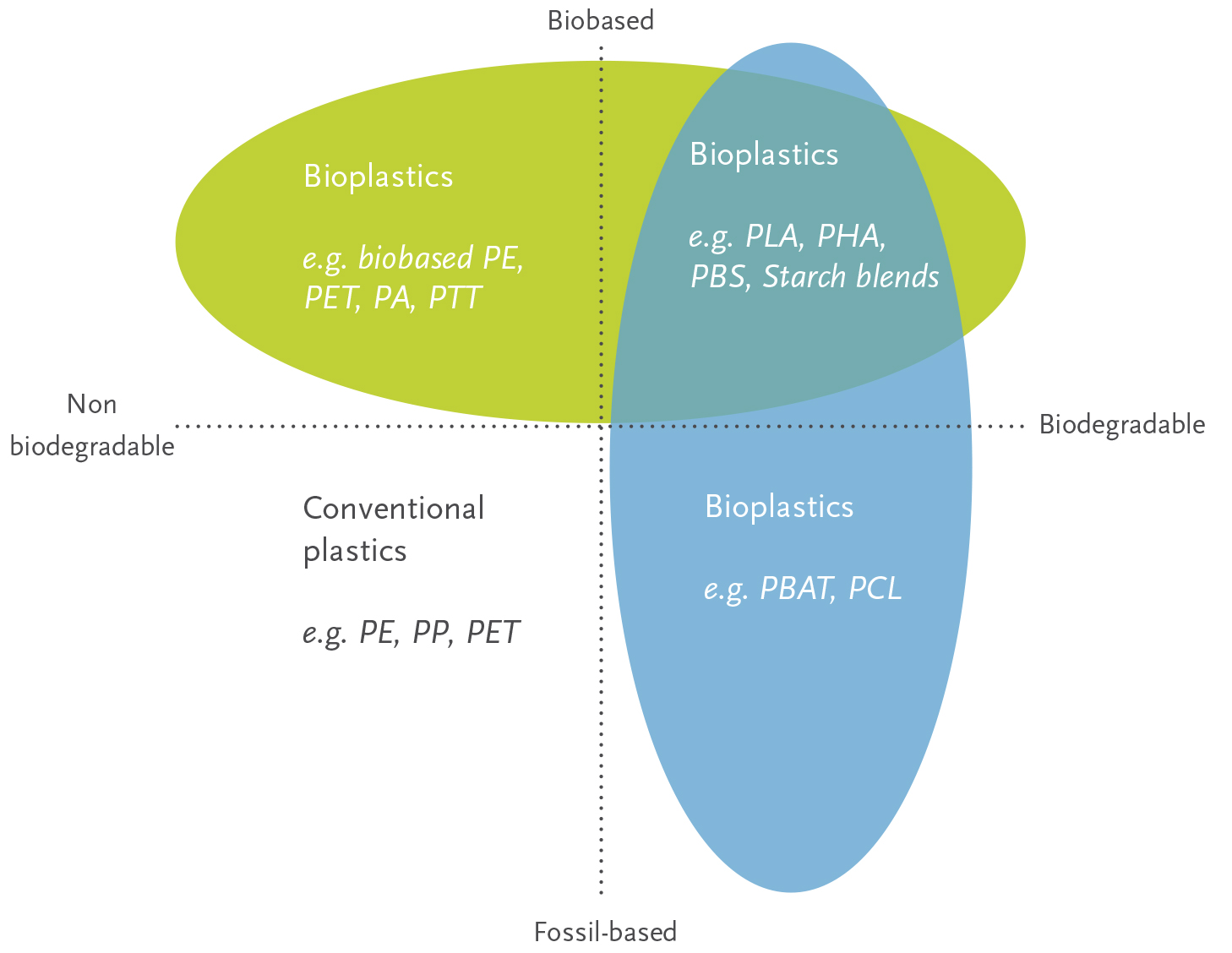What are bioplastics
Attention:
The term bioplastic should preferrably be avoided as it is currently still a general term that can refer to materials that are either bio-based (related to how the material is sourced — wholly or partly from biomass), biodegradable (related to whether a material can be broken down into carbon dioxide, water, and biomass by the natural action of microorganisms), or both. Because not all bio-based plastics are biodegradable, and under the current definition some biodegradable plastics are fossil-based (for example, PBAT), the term bioplastic can be confusing.
Green Serendipity therefore makes a pledge to adjust the definition of bioplastics to:
‘Bioplastics are biobased, recyclable, and/or biodegradable’.
Bioplastics are a large family of different materials
Bioplastics are not just one single material. They comprise of a whole family of materials with different properties and applications. According to European Bioplastics, a plastic material is defined as a bioplastic if it is either biobased, biodegradable, or features both properties.
Biobased
The term ‘biobased’ means that the material or product is (partly) derived from biomass or biowaste. Biomass used for bioplastics stems from e.g. corn, sugarcane or cellulose. Bioplastics can also be produced by microbes or based on CO2 or methane.
Biodegradable
Biodegradation is a chemical process during which microorganisms that are available in the environment convert materials into natural substances such as water, carbon dioxide, and compost (artificial additives are not needed). The process of biodegradation depends on the surrounding environmental conditions (e.g. location or temperature), on the material and on the application.
‘Biobased’ does not equal ‘biodegradable’
The property of biodegradation does not depend on the resource basis of a material but is rather linked to its chemical structure. In other words, 100 percent biobased plastics may be non-biodegradable, and 100 percent fossil based plastics can biodegrade.
Benefits of bioplastics
Bioplastics are driving the evolution of plastics. There are two major advantages of biobased plastic products compared to their conventional versions: they save fossil resources by using biomass which regenerates (annually) and provides the unique potential of carbon neutrality. Furthermore, biodegradability is an add-on property of certain types of bioplastics. It offers additional means of recovery at the end of a product’s life and can help to prevent microplastics for future generations.
Download the Fact Sheet of European Bioplastics on What are bioplastics?

Text and image: European Bioplastics.
